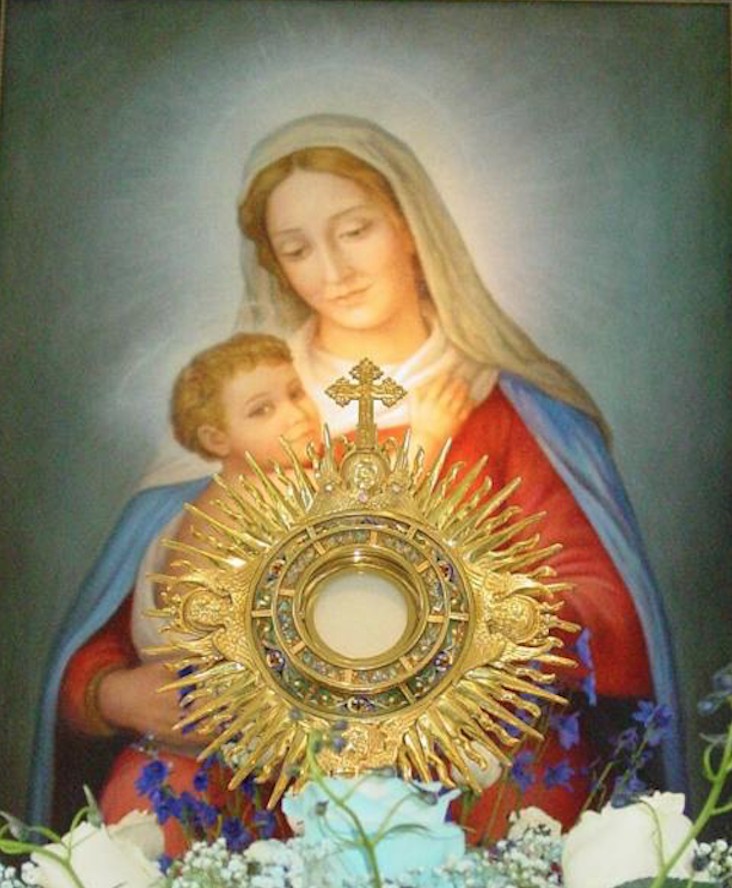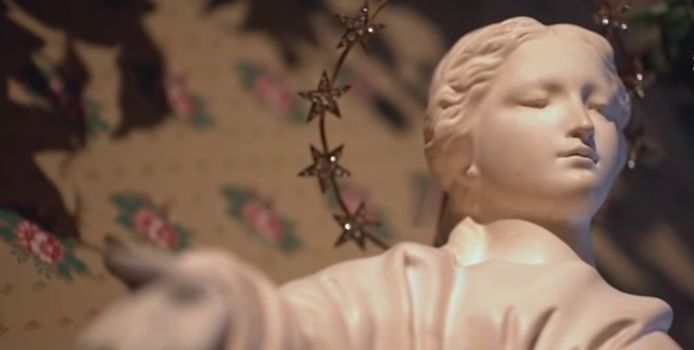In 1842, a 27-year-old French Jew named Alphonse Ratisbonne was visiting Rome. He was the youngest son of an important banking family in Strasbourg, virulently anti-Catholic, and libertine in his customs.
Alphonse Ratisbonne was making a tour of Europe. Ending by coincidence in Rome, he was well received by the French diplomatic circle residing there. He reluctantly made a call on Baron Therodore de Bussières, a very fervent Catholic.
At least it will do me no harm
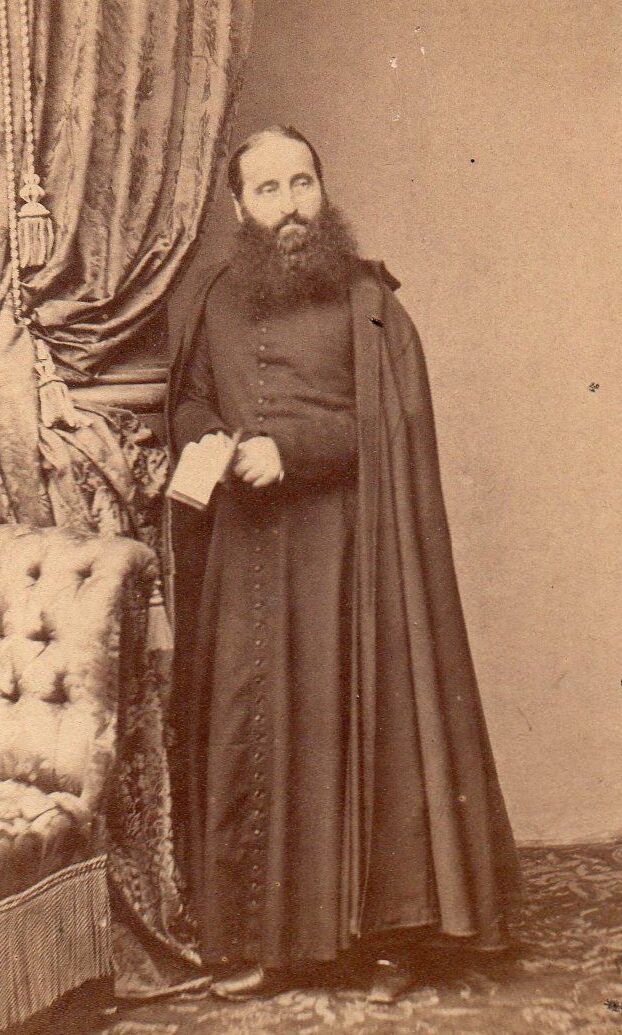 One afternoon, during a lively conversation in which Ratisbonne was ridiculing the superstitions of the Catholic religion, the Baron challenged Ratisbonne to submit to a simple test and wear the Miraculous Medal. Taken aback but wanting to prove the ineffectiveness of such religious baubles, Ratisbonne consented.
One afternoon, during a lively conversation in which Ratisbonne was ridiculing the superstitions of the Catholic religion, the Baron challenged Ratisbonne to submit to a simple test and wear the Miraculous Medal. Taken aback but wanting to prove the ineffectiveness of such religious baubles, Ratisbonne consented.
Baron de Bussières also insisted that Ratisbonne recite the Memorare once a day. Ratisbonne promised, saying, “If it does me no good, at least it will do me no harm.”
Notable among them was a devout Catholic who was seriously ill, Count Laferronays, who probably offered his life for the conversion of Alphonse. On the same day he entered a church and prayed more than 20 Memorares for this intention, he suffered a heart attack, received the last Sacraments, and died.
The next day, his friend Baron de Bussières was on his way to arrange the Count’s funeral in the Basilica of St. Andrea delle Fratte when he met Ratisbonne. He asked Alphonse to accompany him and wait in the church until he had arranged some matters with the priest in the sacristy.
Ratisbonne wandered through the church admiring the beautiful marbles and various works of art.
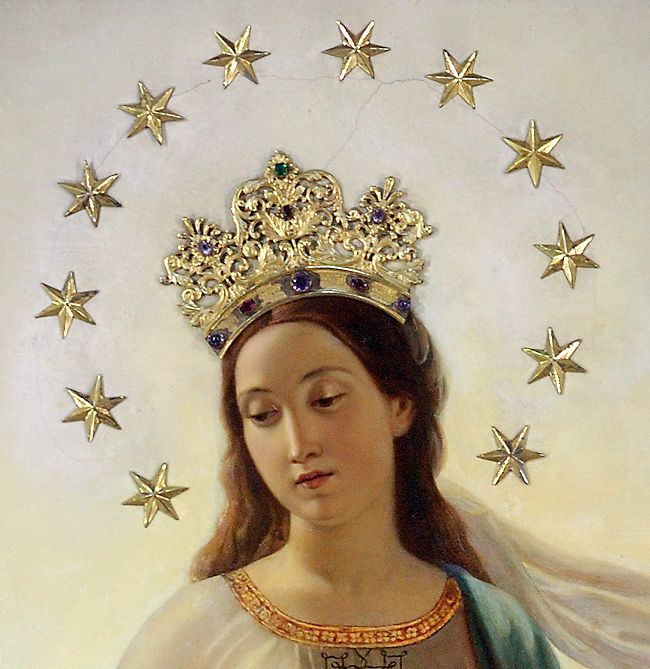 As he stood before a side altar dedicated to St. Michael the Archangel, Our Lady appeared wearing a crown and a simple long white tunic with a jeweled belt around her waist and blue-green mantle draped over her left shoulder. She gazed at him affably; her hands were open speeding rays of graces. Rather, her height and elegance gave the impression of a great lady, fully conscious of her own dignity. She transmitted both grandeur and mercy in an atmosphere of great peace. She had some of the characteristics of Our Lady of Graces.
As he stood before a side altar dedicated to St. Michael the Archangel, Our Lady appeared wearing a crown and a simple long white tunic with a jeweled belt around her waist and blue-green mantle draped over her left shoulder. She gazed at him affably; her hands were open speeding rays of graces. Rather, her height and elegance gave the impression of a great lady, fully conscious of her own dignity. She transmitted both grandeur and mercy in an atmosphere of great peace. She had some of the characteristics of Our Lady of Graces.
Alphonse Ratisbonne saw this figure and understood that he was before an apparition of the Mother of God. He knelt down before her and converted.
Returning from the sacristy, the Baron was surprised to see the Jew fervently praying on his knees before the altar of St. Michael the Archangel. He approached him and tapped him several times without getting the slightest reaction out of him. Finally, he lifted his tear-stained face, and said with an unreadable face: “How that friend of yours must have prayed for me!”
An irresistible force drew me towards her
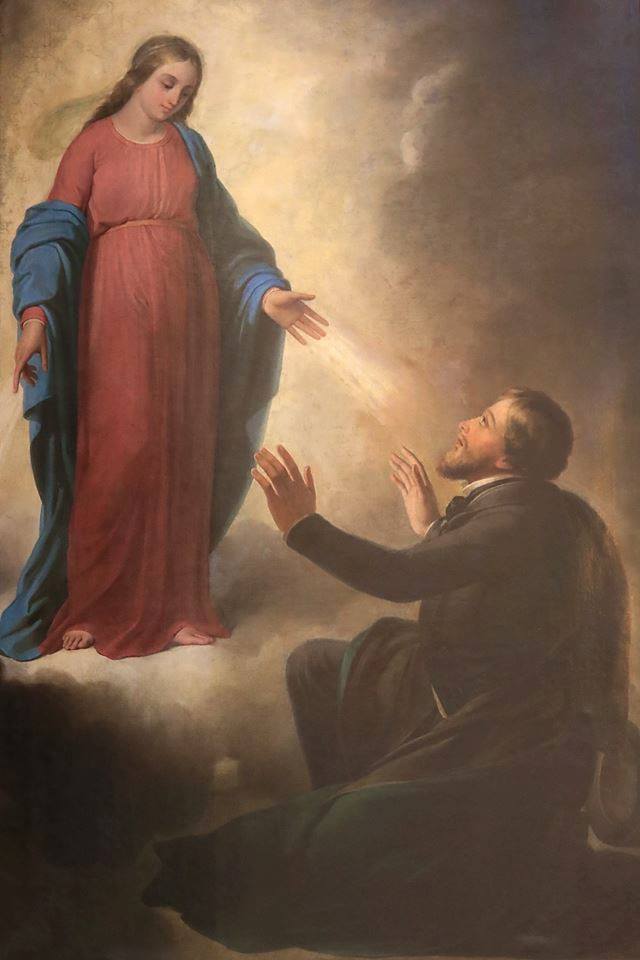 The Baron took him to see Father de Villefort. Ratisbonne told him: “I had only been in the church for a moment when I suddenly felt torn apart by anxiety. I looked up and the whole church had disappeared. One single chapel seemed to have concentrated all the light, and in the middle of that brilliance I saw someone standing on the altar; a lofty shining figure, all majesty and sweetness, the Virgin Mary just as she looks on this medal.
The Baron took him to see Father de Villefort. Ratisbonne told him: “I had only been in the church for a moment when I suddenly felt torn apart by anxiety. I looked up and the whole church had disappeared. One single chapel seemed to have concentrated all the light, and in the middle of that brilliance I saw someone standing on the altar; a lofty shining figure, all majesty and sweetness, the Virgin Mary just as she looks on this medal.
An irresistible force drew me towards her. She motioned to me to kneel down and when I did so, she seemed to approve. She didn’t speak a word, but I understood her perfectly.”
Eleven days later, on January 31, Mary Alphonse Ratisbonne was baptized. He reconciled with his jesuit priest-brother, and he himself became a Jesuit priest. Some years later, the two brothers founded the Congregation of Our Lady of Zion, in the Holy Land, turned to the conversion of the Jews.




